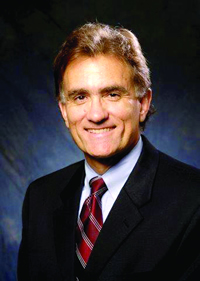
Once recognized primarily in patients with juvenile idiopathic arthritis, macrophage activation syndrome (MAS) is now being seen as a disorder in transition for both children and adults in multiple clinical contexts: Patients with herpes virus infections, severe lupus flares, antiphospholipid syndrome, and maybe even patients with sepsis and hemorrhagic fevers such as Ebola.
“MAS is truly a syndrome, not a disease, per se, except perhaps for patients with a familiar form of this disorder,” said W. Winn Chatham, MD, Professor of Medicine, Louis W. Heck Clinical Scholar and Clinical Director of Immunology & Rheumatology at the University of Alabama at Birmingham. “This is a rapidly evolving area, including major efforts to come up with a more rigorous case definition. Pancytopenia, hepatobiliary dysfunction, and coagulopathy are the three main features in many of the retrospective analyses performed thus far.”
Dr. Chatham will discuss the latest findings in the recognition and diagnosis of MAS in adults during the clinical symposium, Nuts and Bolts of Macrophage Activation Syndrome, from 8:30 – 10:00 am on Monday. He will explore evolving case definition criteria as well as emerging data suggesting that anti-cytokine therapies such as anakinra, an IL-1 antagonist, and tocilizumab, an IL-6 antibody, can help some patients.
“Cytokine antagonists, sometimes in combination with cyclosporine, can be an effective way to manage some forms of MAS,” he said. “A lot of centers still use the hemophagocytic lymphohistiocytosis protocol with fairly toxic chemotherapy such as etoposide, with side effects and outcomes that are not highly desirable. These newer anti-cytokine approaches seem to work with fewer complications.”
Emerging data also make it clear that anti-cytokine therapy doesn’t benefit all patients. As biologic agents came into wider use to control JIA, it was expected that MAS reports would decline.

“That was not the case,” said another session presenter, Alexi Grom, MD, Professor of Pediatrics at the University of Cincinnati. “It became clear that MAS kept occurring. With canakinumab, the rate of MAS does not change much and the clinical presentation seems to be similar. With tocilizumab, the rate of MAS may be a bit lower, but the clinical presentation can be modified. The key message is that clinicians should watch for MAS and be ready to pick it up early in patients who are treated with biologics, even knowing that the clinical presentation is not well-defined, as yet. MAS is still diagnosed late and remains the primary cause of mortality in pediatric rheumatology.”
The picture is even less defined in adult MAS. Too many adult rheumatologists still believe MAS is primarily a pediatric disease.
“The real surprise to adult rheumatologists is how many patients actually have, or have had, MAS but they missed it,” said fellow presenter Edward Behrens, MD, Chief of Rheumatology and Joseph Lee Hollander Chair in Pediatric Rheumatology at The Children’s Hospital of Philadelphia. “Now that they know what adult MAS looks like, they are going to see it in the future.”

The real problem, Dr. Behrens said, is the highly heterogeneous nature of MAS. Blocking IL-1 or other cytokines can be highly effective in some patients even as other patients develop MAS while on the same therapy.
“We need to be much more sophisticated about our diagnostics and our prognostics in order to hand tailor therapy to individual patients and individual scenarios,” he said. “We are still trying to figure out what are the relevant cytokines and the relevant pathways to block in which patients. There are multiple cytokines we can block but we don’t know which to block and when to block them.”
In addition to anti-IL-1 and anti-IL-6, case reports and early clinical work suggest that blocking IL-18 and IL-33 can benefit some patients.
“This is an exciting time because we have useful agents at our disposal and some interesting targets,” Dr. Behrens said. “It is a time of discovery of how to optimize treatment for each individual patient. MAS is one of a hundred autoimmune diseases. But your patients with RA and most of the others aren’t going to die within 48 hours of diagnosis if you do the wrong thing. This session will help you recognize and do the right thing with your MAS patients.”
